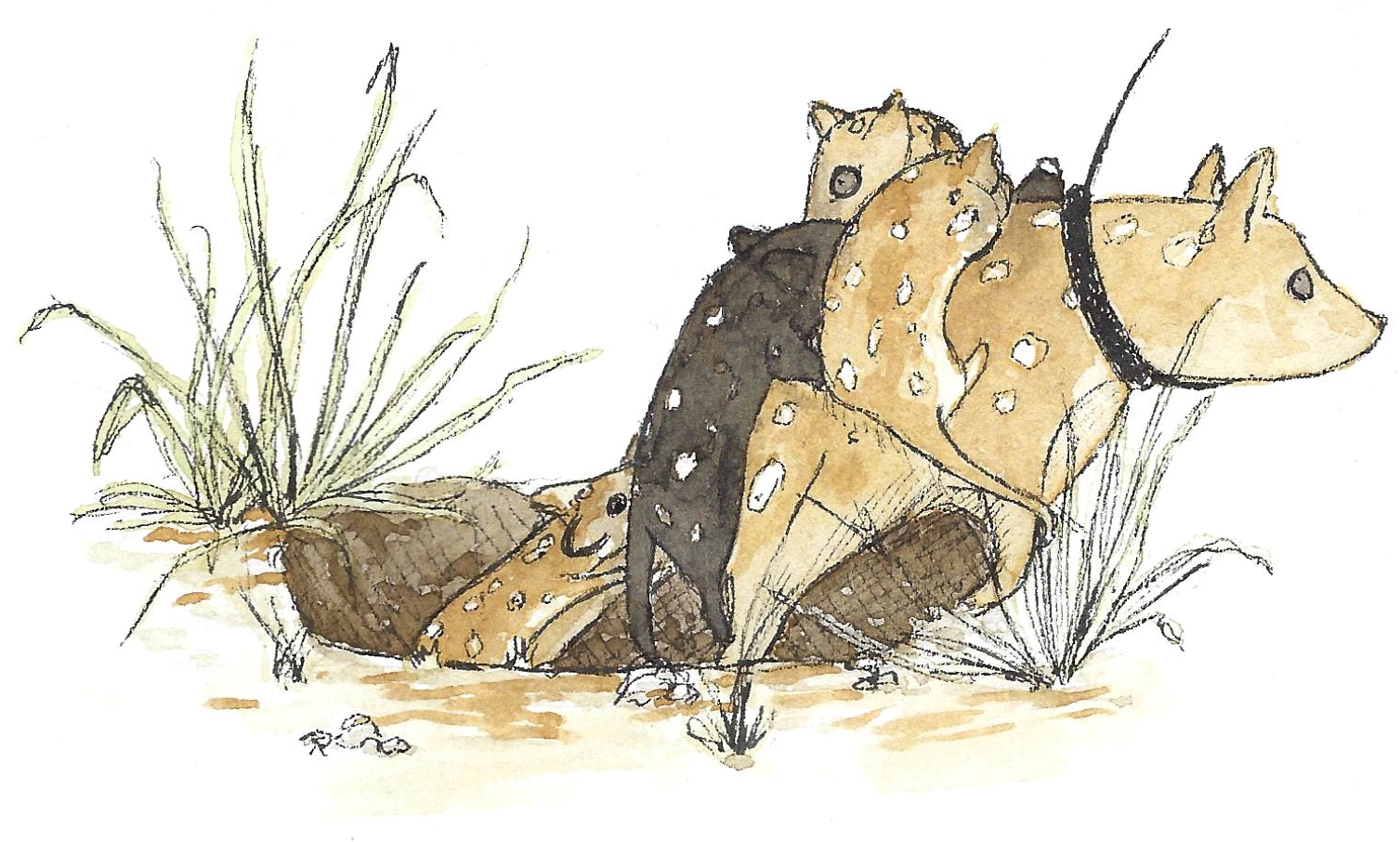PhD seminar - Reintroduction Biology of the Eastern Quoll
Belinda aims to elucidate knowledge relating to the eastern quoll’s biology that can be harnessed to improve reintroduction outcomes, as well as develop frameworks that can be applied to other programs across the globe.
Speakers
Content navigation
Description

Defaunation in the Anthropocene, driven by human-induced environmental change and destruction, threatens biodiversity, ecosystem function, and the health of all living beings across the globe. Reintroductions are a critical tool used to reverse defaunation and restore ecosystem function. Reintroduction success hinges on a population’s passage through the establishment (where post-release effects drive population dynamics), growth (characterised by high rates of expansion), and regulation phases (where density dependence limits survival and recruitment). However, management decisions are always made in the face of imperfect knowledge, which have historically led to low levels of reintroduction success.
During Belinda’s PhD, she explored trials, tactics, behaviour, movement, and species recovery using the model system of reintroduced eastern quolls (Dasyurus viverrinus, murunguny in the Indigenous Ngunnawal language) in a fenced, outdoor laboratory; Mulligans Flat Woodland Sanctuary in the Australian Capital Territory. The eastern quoll is an endangered carnivorous marsupial of high conservation priority with the potential to fulfil the ecological role of a ground-dwelling mesopredator. Belinda aimed to elucidate knowledge relating to the eastern quoll’s biology that could be harnessed to improve reintroduction outcomes, as well as develop frameworks that could be applied to other programs across the globe.
This research forms part of the Australian Research Council-funded Bringing Back Biodiversity project, which has already supported the successful reintroduction of the eastern bettong (Batson 2015, Ross 2020), bush stone-curlew (Rapley 2020), and New Holland mouse, as well as exploration into genetic management (Brockett et al 2022). This is the first time such a multi-species reintroduction has been attempted within such an integrated experimental framework, and the results will have enormous implications for both fundamental and applied ecology, by providing critical insights into how to combine species reintroductions with ecosystem restoration techniques to improve management and resilience of Australia’s woodland ecosystems. This project also represents a major collaborative effort between The Australian National University, ACT Government, Woodlands and Wetlands Trust, and Mt Rothwell, and is part of the long-term Mulligans Flat-Goorooyarroo Woodland Experiment.
About the Speaker
Belinda Wilson is an ecologist who specialises in threatened species conservation and reintroduction biology.
Her experience in academic research, consultancy, and environmental regulation have led to a keen interest in combining fundamental science with management actions. By understanding how environmental change impacts physiology, behaviour, habitat use, associations, and broader ecosystem processes, Belinda investigates how iterative trials and adaptive management can lead to better conservation outcomes for threatened species.
Belinda is finalising her PhD on the reintroduction biology of the eastern quoll (Dasyurus viverrinus, murunguny in the Indigenous Ngunnawal language) as part of the Mulligans Flat-Goorooyarroo Woodland Experiment.

Location
Frank Fenner Seminar Room & online via Zoom.
